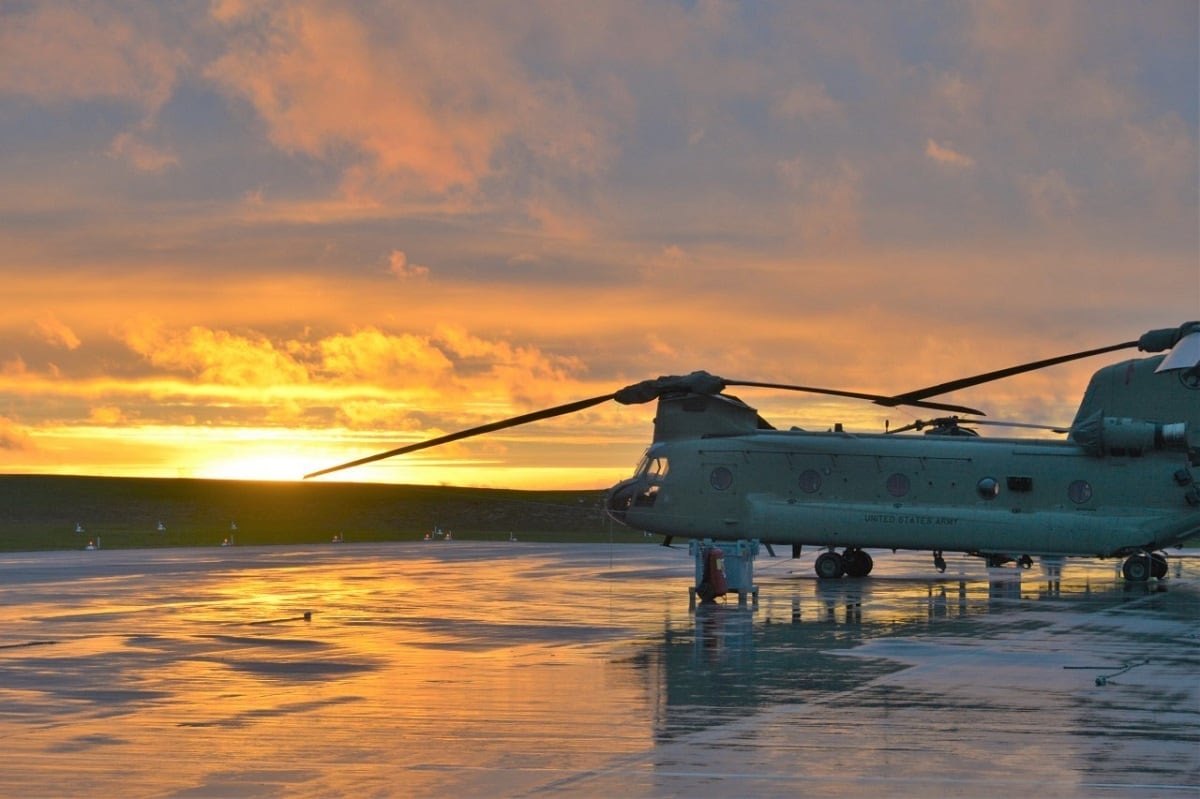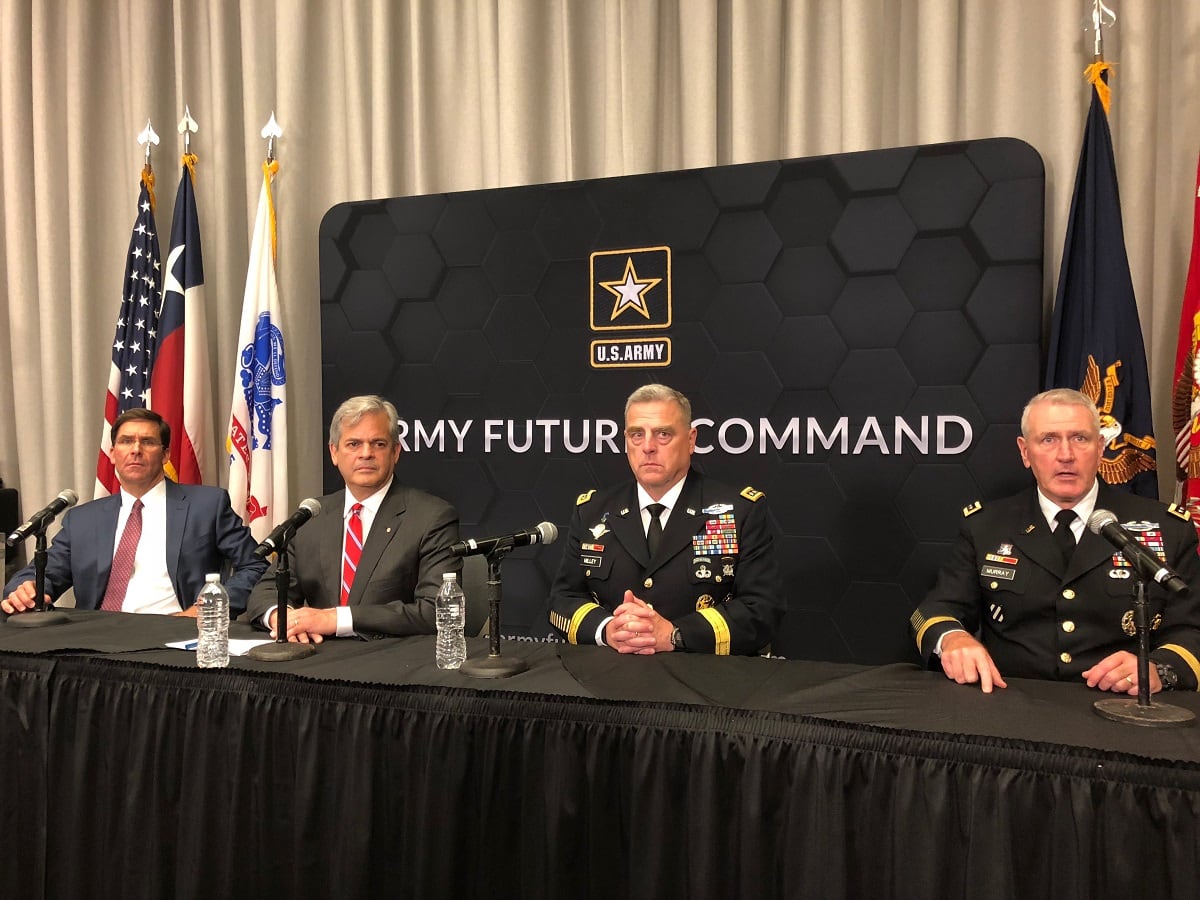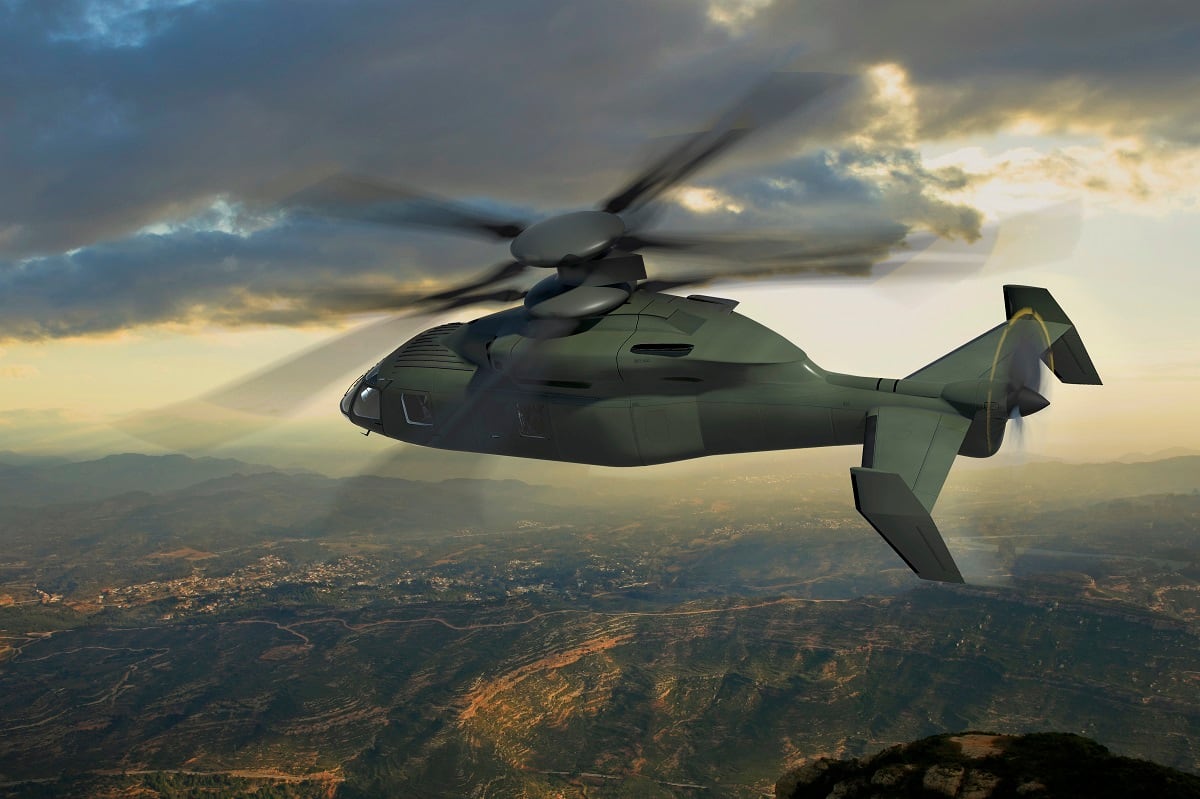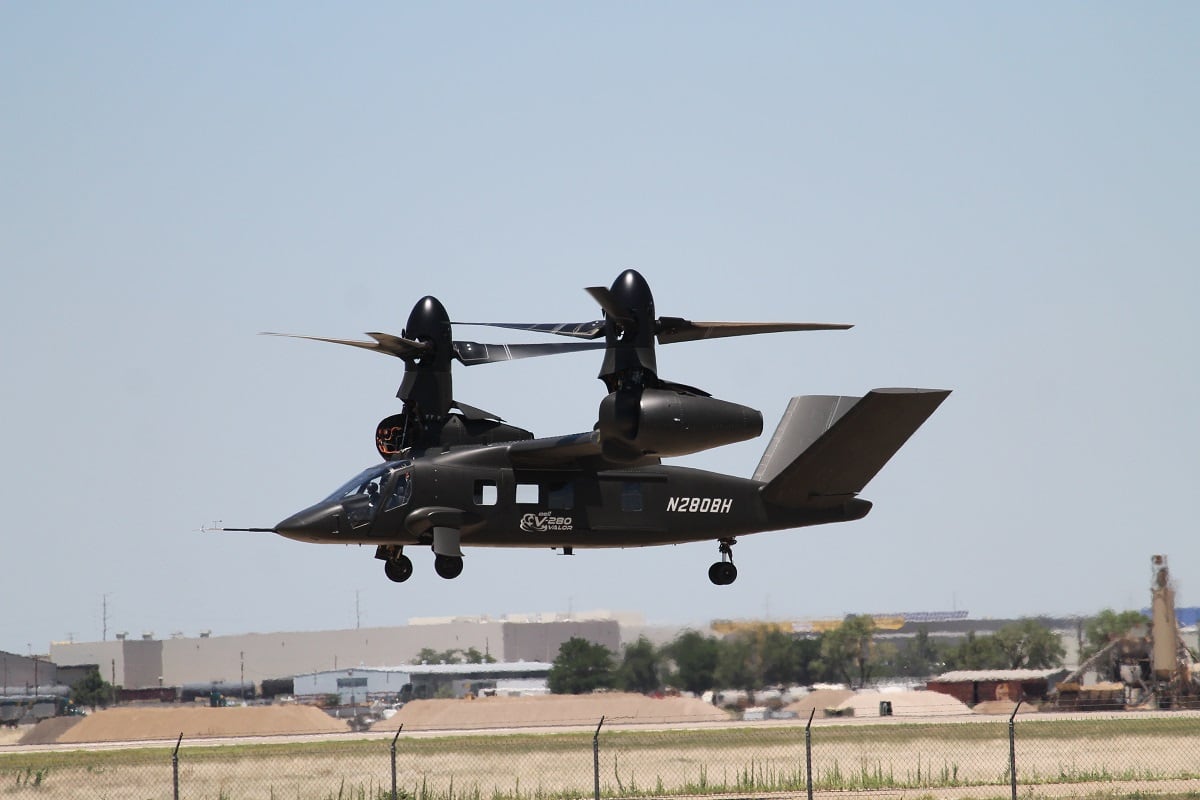WASHINGTON — The U.S. Army has kicked off a major design competition for its Future Attack Reconnaissance Aircraft by releasing a request to industry on Oct. 3 to submit plans that could lead to a chance to build flyable prototypes in just a few years.
The service, in June, released a draft solicitation that outlined its intention to get two different helicopter prototypes flying in 2023.
RELATED

The effort is part of the Army’s larger move to procure a family of Future Vertical Lift, or FVL, aircraft in the early 2030s, if not sooner.
The Army has been talking about procuring an FVL family of helicopters for the better part of a decade and has debated whether to prioritize the pursuit of a medium-lift helicopter to replace UH-60 Black Hawks and AH-64 Apache helicopters. Alternatively, the service was considering buying an armed reconnaissance helicopter to fill the gap left by the OH-58 Kiowa Warrior’s 2014 retirement.
With the advent of the Army Futures Command and its focus on six modernization priorities, of which FVL is third, progress is being made at lightning speed to make FVL a reality.
RELATED

The service, through an FVL Cross-Functional Team, led by Brig. Gen. Wally Rugen, has settled on going after both a long-range assault helicopter and a Future Attack Reconnaissance Aircraft somewhat back-to-back.
But the FARA procurement plans are fast-paced and lead straight to a winner through a fly-off competition, which deviates from the way the Army has gone about its future medium-lift helicopter development.
While the Army collected designs, reviewed them and selected two teams to build prototypes to fly in a Joint Multi-Role technology demonstration for a medium-lift aircraft, the results will simply inform requirements for the Army to move into a program of record where the service will make a determination on how it will compete, build and procure a long-range assault variant of FVL.
With the FARA competition, the Army plans to award four to six initial design contracts in June of 2019, and then nine months later — to avoid camping out in the PowerPoint stage — the service will choose up to two designs to move forward in fiscal 2021 with a fly-off planned to start in the first quarter of 2023 (November 2022 to be specific, according to the solicitation).

The Army will choose a winner and move forward into a milestone appropriate to advance the procurement of the helicopter, whether that is a technology development phase or engineering and manufacturing development or even a production phase, Rugen told a small group of reporters in an Oct. 3 media roundtable.
It all depends on where the technology stands following the fly-off and what phase of the acquisition process the Army will enter once it chooses a winner, Dan Bailey, the Army’s JMR-TD director, said in the interview.
“The Army currently lacks the ability to conduct armed reconnaissance, light attack, and security with improved stand-off and lethal and non-lethal capabilities with a platform sized to hide in radar clutter and for the urban canyons and mega cities,” the solicitation states.
The helicopter would be the “ ‘knife-fighter’ of future Army Aviation capabilities” in a small package with “maximized performance,” it describes.
The Army doesn’t want to carve out requirements in granite, according to Rugen, and intends to be flexible as technology capability unfolds in the program, but the solicitation does state it wants a 40-foot maximum rotor diameter, and the fuselage should also not exceed 40 feet in width.
By staying flexible, the Army hopes to steer clear of some of the mistakes it has made in the past attempting to acquire an armed reconnaissance helicopter. The Army failed three times to procure a new aircraft — the most memorable being the cancellation of the Comanche helicopter program in 2004 after two aircraft were built and $6.9 billion was spent.
Rugen said the Army also wants to make sure affordability considerations are driven into the program and the designs from the beginning are a top requirement for industry to consider.
The Army also wants the designs to incorporate the Improved Turbine Engine Program, or ITEP, engine that is being competitively developed to replace the engines in Black Hawks and Apaches. The Army is close to choosing a winner from two teams designing engines to move into the engineering and manufacturing development phase of the program within the next few months.
The Army plans to spend approximately $15 million per industry participant in the initial design phase. Participants would receive $8.5 million in FY19 and $6.5 million in FY20.
The two participants selected to continue into the prototype phase of the program would receive about $735 million each from FY20 to FY23.
Rugen and Bailey said industry interest following the release of the draft solicitation in June has been higher than anticipated and included both industry partners that were not expected and all of those that were.
Bailey said that, based on industry interest and participation so far, choosing six designs would be a competitive process because there are more than six possible entrants that have expressed interest in submitting designs.
Tim Malia, Sikorsky’s program director for FVL light development, told Defense News in a recent interview that the Lockheed Martin-owned company planned to use its X2 technology that is used in its S-97 Raider coaxial helicopter program as the centerpiece to its design offering for the FARA competition.
The company is already scaling its X2 technology used in Raider up to a medium-lift aircraft — called the SB-1 Defiant that is participating in the JMR technology demonstration and expected to fly by the end of the year.
RELATED

Malia said it would not be difficult to scale the helicopter from the 34-foot main rotor diameter size of the Raider to the desired 40-foot diameter rotor blades envisioned for FARA.
The company has also been working on designs to outfit Raider or any aircraft it builds with X2 technology with the ITEP engine.
Sikorsky announced Oct. 3 that its Raider aircraft exceeded 200 knots in a flight test at its West Palm Beach, Florida, flight test center.
RELATED

Bell, which has been flying its V-280 Valor til-trotor helicopter as part of the JMR-TD effort for the better part of a year, continues to hold tight its plans for a design to submit to the FARA competition.
Jen Judson is an award-winning journalist covering land warfare for Defense News. She has also worked for Politico and Inside Defense. She holds a Master of Science degree in journalism from Boston University and a Bachelor of Arts degree from Kenyon College.







